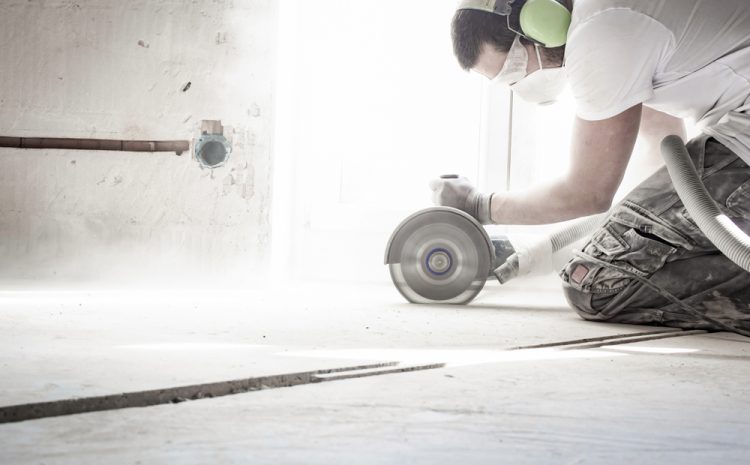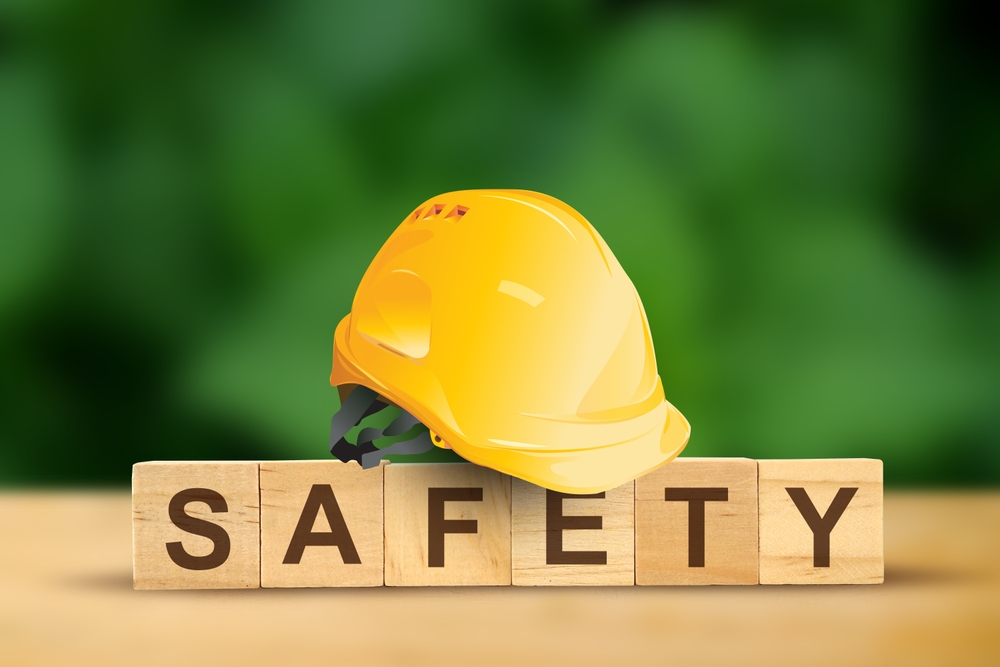
The Safety Precautions You Need to Take When Cutting Concrete
Concrete cutting is a vital process in construction and renovation projects, enabling precise shaping and removal of concrete structures. While the results can be impressive, it’s crucial to recognise that concrete cutting involves inherent risks that demand meticulous safety precautions.
In today’s article, we’ll take a look at the key safety measures essential for a secure concrete-cutting operation.
Understanding Concrete Cutting
Concrete cutting involves the use of advanced tools and equipment to create controlled incisions in concrete surfaces. This process is commonly employed in tasks like creating openings for doors and windows, removing damaged sections, and shaping concrete for various purposes. Concrete cutting tools include slab saws, wall saws, wire saws, and handheld saws, each designed for specific applications.
Potential Hazards in Concrete Cutting
1) Dust Generation and Respiratory Risks
Cutting concrete generates a significant amount of dust, which poses respiratory hazards to workers. Inhaling concrete dust can lead to lung-related issues, including silicosis. Proper dust control measures are essential to minimise exposure.
2) Noise Pollution and Hearing Protection
Concrete cutting produces high levels of noise, potentially causing hearing damage to workers. Ear protection, such as noise-cancelling headphones or earplugs, is critical to prevent hearing loss.
3) Flying Debris and Eye Protection
During the cutting process, debris can be propelled at high speeds, posing a risk to workers’ eyes. Safety goggles or face shields provide essential eye protection to prevent injuries.
Essential Safety Precautions
Personal Protective Equipment (PPE)
- Importance of PPE – Personal protective equipment (PPE) is a cornerstone of concrete cutting safety. It includes items such as respirators, safety glasses, gloves, and hearing protection.
- Examples of PPE for Concrete Cutting – Workers must wear N95 respirators to filter out harmful dust particles. Safety glasses with side shields protect the eyes from debris, while gloves offer hand protection from sharp edges.
Site Preparation and Inspection
- Clearing the Work Area – Before starting the cutting operation, ensure the work area is clear of obstacles and debris. This prevents tripping hazards and allows for smooth movement.
- Identifying Potential Hazards – Inspect the cutting area for potential hazards, such as overhead power lines, gas lines, and unstable structures. Mark hazardous areas with caution tape or barriers.
Proper Training and Certification
- Benefits of Training – Adequate training is essential for safe concrete cutting. Proper training ensures that operators understand the equipment, potential risks, and safety procedures.
- Certified Operators and Technicians – Hiring certified operators and technicians guarantees a higher level of expertise in handling concrete cutting equipment, reducing the risk of accidents.
Ventilation and Dust Control
- Dust Extraction Systems – Employ dust extraction systems equipped with HEPA filters to effectively capture and contain concrete dust. This minimises exposure to harmful particles.
- Wet Cutting Techniques – Wet cutting involves using water to suppress dust emissions during cutting. This technique reduces airborne dust and enhances worker safety.
Hearing Protection Measures
- Noise Reduction Ratings (NRR) – Choose noise-cancelling headphones or earplugs with high noise reduction ratings (NRR) to effectively block out excessive noise levels.
- Noise-Cancelling Headphones – Noise-cancelling headphones not only protect hearing but also improve communication among workers by reducing background noise.
Safe Handling of Tools
- Correct Handling of Saws – Operators should be trained in the correct techniques for handling saws. Proper grip and stance prevent accidents and ensure accurate cutting.
- Maintaining Tools and Blades – Regular maintenance of cutting tools and blades ensures optimal performance and reduces the risk of equipment malfunctions during operation.
Communication and Signage
- Signalling Procedures – Establish clear signalling procedures among team members to communicate effectively during the cutting process.
- Warning Signs for Work Zone – Place warning signs around the work zone to alert other workers and passersby about the ongoing concrete-cutting operation.

Specialised Safety Measures
Wire Sawing Safety
- Tension and Alignment Precautions – Proper tensioning and alignment of the wire saw are essential to prevent snapping or misalignment during cutting.
- Safe Wire Replacement Techniques – Train operators in safe procedures for replacing the wire when it becomes worn or damaged to prevent accidents.
Wall Sawing Safety
- Proper Blade Installation – Ensure the correct installation of the blade on the wall saw to prevent blade dislodgement during operation.
- Securing the Cutting Surface – Secure the cutting surface to prevent vibrations or movement that could lead to unstable cutting conditions.
Handheld Sewing Safety
- Proper Grip and Stance – Instruct operators to maintain a firm grip and balanced stance while using handheld saws to prevent kickbacks and loss of control.
- Avoiding Kickbacks and Vibrations – Proper technique and adequate pressure prevent kickbacks and excessive vibrations, enhancing both safety and cutting accuracy.
Emergency Preparedness
- First Aid Kits and Medical Supplies – Keep well-stocked first aid kits and medical supplies on-site to address minor injuries promptly and effectively.
- Emergency Stop Procedures – Establish clear emergency stop procedures to halt the cutting operation in case of unforeseen hazards or accidents.
- Communication During Emergencies – Ensure efficient communication methods during emergencies, enabling workers to alert others and seek help if needed.
Compliance with Regulations
- OSHA Standards for Concrete Cutting – Adhere to the Occupational Safety and Health Administration (OSHA) standards that apply to concrete cutting to maintain a safe work environment.
- Local and National Regulations – Familiarise yourself with local and national regulations pertaining to construction safety and concrete-cutting practices.
Final Thoughts
Prioritising safety in concrete cutting operations is non-negotiable. By understanding potential hazards, equipping workers with proper PPE, implementing effective safety measures, and complying with regulations, you can create a secure work environment that ensures the well-being of everyone involved. Remember, a commitment to safety not only protects workers but also enhances the overall efficiency and success of your concrete-cutting projects.
When it comes to professional concrete cutting services in Sydney, one name stands out: Sydney Sawing & Drilling. With our years of industry experience, licensed operators, state-of-the-art equipment, and commitment to safety and customer satisfaction, we have earned a stellar reputation in the field. Take the next step towards a successful project by contacting us today for a quote.
If you are looking for a concrete cutting company that is trustworthy and reliable, then don’t go past Sydney Sawing & Drilling. Please call us today on (02) 9158 6101 or leave an enquiry.

